Technology
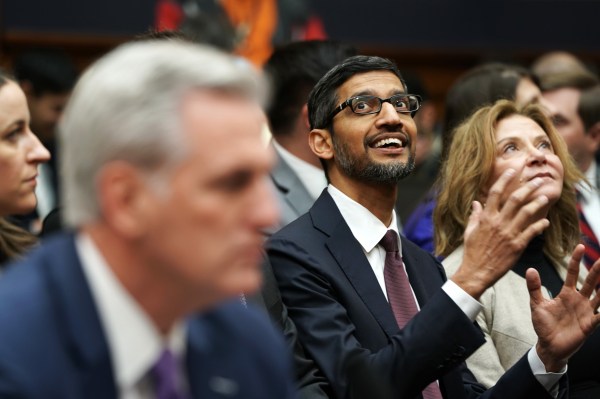
Google founders Larry Page and Sergey Brin just announced that Google CEO Sundar Pichai will be replacing Page as the CEO of parent company Alphabet.
In addition, Brin is stepping down from his role as Alphabet president.
Alphabet first came into existence in 2015 as &a collection of companies& that separates Google from &other bets& that aren&t part of its core businesses, such as Waymo (self-driving cars), Verily (life sciences), Calico (biotech R-D), Sidewalk Labs (urban innovation) and Loon (rural internet access via balloon).
At the time, Page shifted from the Google CEO role to Alphabet CEO, with Pichai stepping in to lead the search giant.However, Page and Brin wrote today that &Alphabet and Google no longer need two CEOs and a President. Going forward, Sundar will be the CEO of both Google and Alphabet.&
Pichai has been Googlepublic facefor a while now, but this move cements his leadership of the larger company, while moving Page and Brin out of the limelight.
&I&m excited about Alphabet and its long term focus on tackling big challenges through technology,& Pichai said in a statement. &I&m looking forward to continuing to work with Larry and Sergey in our new roles. Thanks to them, we have a timeless mission, enduring values, and a culture of collaboration and exploration. Ita strong foundation on which we will continue to build.&
About Pichai, Page and Brin wrote:
Sundar brings humility and a deep passion for technology to our users, partners and our employees every day. Heworked closely with us for 15 years, through the formation of Alphabet, as CEO of Google, and a member of the Alphabet Board of Directors. He shares our confidence in the value of the Alphabet structure, and the ability it provides us to tackle big challenges through technology. There is no one that we have relied on more since Alphabet was founded, and no better person to lead Google and Alphabet into the future.
And rather than framing this as a departure, the pair suggested that they&ve &never been ones to hold on to management roles when we think therea better way to run the company& and that they remain &deeply committed to Google and Alphabet for the long term, and will remain actively involved as Board members, shareholders and co-founders.&
As of 5:04pm Eastern, Alphabetstock is up 0.68% in after-hours trading.
- Details
- Category: Technology
Read more: Google CEO Sundar Pichai is taking over as CEO of Alphabet
Write comment (97 Comments)
Investment in space startups is significant and growing, and the opportunities available to commercial players in space exploration, research and industrialization are multiplying. But for non-expert investors and observers, these opportunities can seem obtuse and obscured, buried in technical jargon and a heady amount of hype.
Thata great time to consult with those already active in space investing — like François Chopard, CEO of global aerospace and defense accelerator Starburst.
Chopard recently presented a deck detailing the current state of the space industry, specifically from the perspective of early-stage startup and investment activity. The Starburst CEO essentially pegs the beginning of the current upturn in space and defense startup investing as getting off the ground in around 2015, right around the time that SpaceX started ramping its launch cadence after more than a decade of development, testing and early commercial launch service.
Notably, Chopard says that Starburst has a database holding more than 6,000 aerospace and defense startups put together by its scouting team, and that while he personally expected some kind of plateau or slow in the rate of growth in the sector to have come into play by now, in fact there has been no such slowdown.
This year alone, there was a total of $5 billion in disclosed funding — and thatdata that doesn&t include the final three months of the year. Taken together, that represents four percent of the overall VC market, per Starburstcalculations.
Chopard also outlines trending opportunities that Starbust is seeing in terms of the space and defense industrydevelopment, citing the &ground segment& as the &next bottleneck,& for instance.
Essentially, that means that all these new satellite companies who are able to get their hardware to space thanks to the advent and availability of affordable launch vehicles will need Earth-based infrastructure to handle the data they gather, both in terms of transmission and storage, and thatgoing to be a booming opportunity for new and emerging companies.
This deck is a great look at whatinteresting and exciting to investors about aerospace and defense, and why ita category that has seen a lot of growth in terms of VC investment in recent years despite seemingly high technology hurdles and perceived long development timelines.
- Details
- Category: Technology
Read more: An investor’s perspective on the current state of the global space startup industry
Write comment (91 Comments)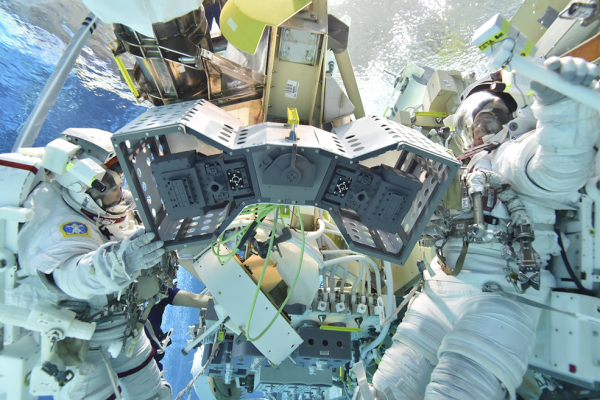
NASA is going to be sending something it calls a &robot hotel& to the International Space Station aboard the next commercial resupply mission, which is set to launch aboard a SpaceX Falcon 9 rocket this week. The robot hotel is more formally known as the &Robotic Tool Stowage& unit, or the RiTS for short, because NASA loves nothing quite so much as it loves acronyms.
Depending on how eager you are to anthropomorphize robots, the &hotel& designation might not be quite as appropriate as &garage& — this unit is essentially a protected parking space for robots when not in use, helping to protect them from potential dangers presented by being in space, including exposure to radiation, and the potential to get hit by micrometeors and other debris.
The first guests at the hotel will be two robots called Robotic External Leak Locators (RELL — because acronyms). They do what it says on the tin, finding leaks in the ISS exterior hull from the outside, which is a key job. And in the past, they&ve been stored inside the ISS when not in use, but space is at a premium in the station itself, so any time you can save some itgood news for astronauts and for ongoing research and other equipment.
Plus, the RELLs need to be calibrated when they&re sent out to do their job, a process that requires 12 full hours. Because their new storage environment is already external, it&ll be much easier and quicker for the stationDextre robotic arm to retrieve them and set them to work.
- Details
- Category: Technology
Read more: NASA will launch a ‘robot hotel’ to the Space Station on its next SpaceX resupply mission
Write comment (93 Comments)Books are fundamentally about stories, and 2019 (and really, the past decade) has been the story of technologydomination of every industry and function of society. Founders and tech executives are more powerful than ever, and how we use that power for good or evil will deeply shape the future of our world.
Whether itthe sudden rise of TikTok and the ubiquity of social networks in business, economics, and politics, or the coming conflagration of climate change, or the challenges of personal and professional development, or just finding your way in building a startup, there was just an avalanche of books published this year on every topic near and dear to a technologistand founderheart.
I wanted to get a sense of what our readers thought were the best books they read this year, and so I reached out to our Extra Crunch membership to ask for their recommendations. Perhaps unsurprisingly for a group of people who actually pay for deeper journalism, our EC readers submitted dozens and dozens of book recommendations on every subject imaginable.
From those recommendations, I carefully selected a list of just 12 books that seemed the most recommended by our readers and also captured the zeitgeist of the times we are living in. Every book here is great and important, and I only wish we had more time to read them all.
How to handle the coming total disruption of society by technology
Loonshots: How to Nurture the Crazy Ideas That Win Wars, Cure Diseases, and Transform Industries by Safi Bahcall
St. MartinPress / 368 pages / March 2019
PublisherLink
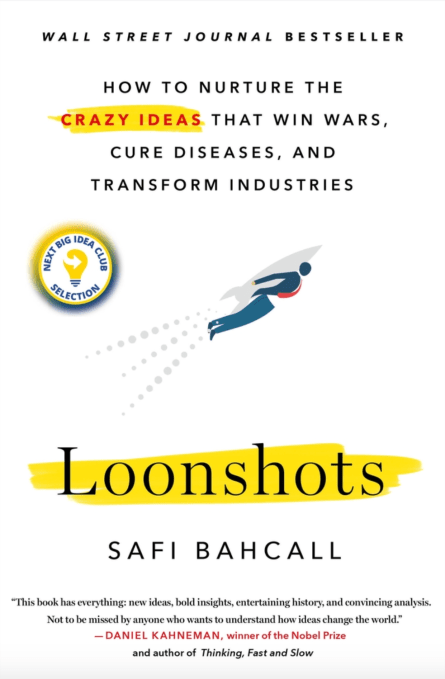
Anyone who has worked long enough in innovation and technology knows that great ideas can come from anywhere. But how do those ideas actually go from mere thoughts to actions and products, while avoiding the organizational politics that often prevent them from seeing the light of day in the first place?
Safi Bahcall, a PhD physicist from Stanford who co-founded and led Synta Pharmaceuticals as CEO through its IPO on NASDAQ in 2007, has been thinking about serendipity in science for years, and Loonshots is his first book. In it, Bahcall borrows concepts from science to move beyond looking purely at organizational culture to investigating organizational structure, investigating how we design our teams and how that can play an outsized role in whether new ideas flourish — or are killed on the spot.
Widely lauded by luminaries and a bestseller on Amazon and the Wall Street Journal, the book asks one of the most important questions in innovation today and gives a series of vignettes on how to improve our ability to handle spontaneity. A great book for the disrupting — and the disrupted.
The Technology Trap: Capital, Labor, and Power in the Age of Automation by Carl Benedikt Frey
Princeton University Press / 480 pages / June 2019
PublisherLink
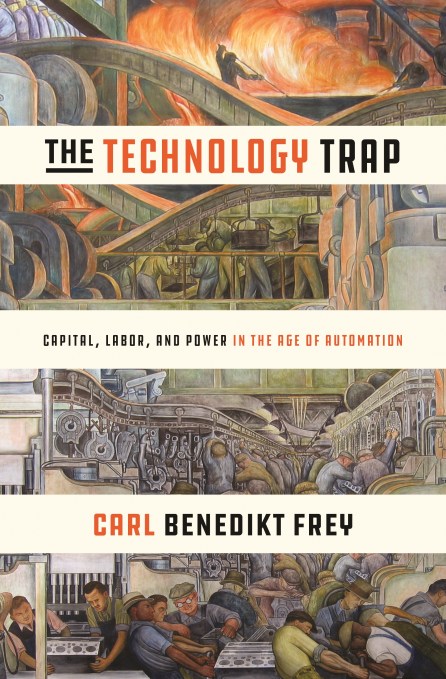
Digital disruption is all around us. Artificial intelligence is quickly eliminating millions of middle-class jobs, and fears of automation are growing among more and more workers, polarizing our politics and complicating the future of business.
Yet, all of this has happened before. More than a century ago, technologies like replaceable parts and the steam engine combined to create one of the greatest transformations our society has ever seen in the Industrial Revolution. But just how did the Industrial Revolution happen, and how did it affect everyday people in England, America, and elsewhere?
Carl Benedikt Frey, a fellow at Oxford University and director of the Programme on Technology - Employment at the Oxford Martin School, investigates the short, medium, and long-term consequences of the Industrial Revolution on workers, finding that in fact the changes had extraordinarily negative consequences in the short term. His lessons from this pivotal moment in history can help technology leaders avoid the biggest risks today in how we design human/AI systems in the coming age of automation.
Digital Transformation: Survive and Thrive in an Era of Mass Extinction by Thomas M. Siebel
RosettaBooks / 256 pages / July 2019
PublisherLink
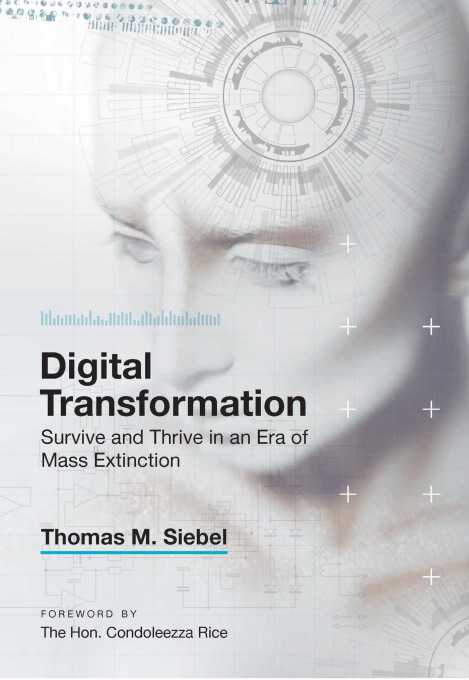
You&ve re-built your structure based on Loonshots, and learned the lessons of The Technology Trap, but ultimately, many leading enterprise companies today are facing extinction from a number of new technology waves like elastic cloud computing and the internet of things. For those not doing the disrupting but rather on the receiving end, what exactly are you supposed to do?
Billionaire entrepreneur Tom Siebel, who founded Siebel Systems and eventually merged it into Oracle in 2006 for nearly $6 billion, wrote his first book in almost two decades on the topic of how legacy companies can navigate these turbulent times. Through Digital Transformation, Siebel tries to offer the disrupted a primer on just what is going on in AI and other big tech waves to help executives understand what strategies they can use to defend their businesses.
A brisk and reasonably short read, Digital Transformation offers key lessons, even if they may well be ignored by most before it is too late.
How to deal with techinadequacies and head-banging, stupid behavior
Technically Wrong: Sexist Apps, Biased Algorithms, and Other Threats of Toxic Tech by Sara Wachter-Boettcher
W. W. Norton - Company / 240 pages / October 2017
PublisherLink
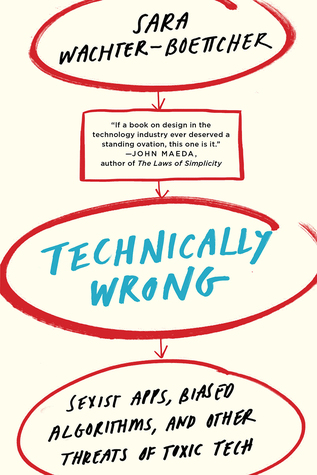
While we love writing about the growth of innovative products and startups here at TechCrunch, the other side of that coin is that there has been a constant cavalcade of dumb actions by founders and engineers the past few years that has turned many sour on the future of our industry. Whether it is sexism in financial underwriting or employee political controversies (stories just from the last few days), technology is increasingly under a microscope — and the industry doesn&t look good at full resolution.
Technically Wrong, a book by consultant and tech critic Sara Wachter-Boettcher, tries to take a more playful approach to all these challenges by just sort of splaying them all out together for the world to see. While ostensibly targeted at the general public, the idiocies that Wachter-Boettcher identifies should be taught in every software engineering, product management, and UX design class.
As one Extra Crunch member wrote in their endorsement:
This is my favourite book. It highlights examples of bias in tech and how this has led to negative or even harmful applications in society. It makes a strong case for any developer to consider how their tech may be biased or have potential to be used for harm. A must read.
Given the plague of scandals hitting tech, the book is perhaps a tad out of date just two years post-publication, but its lessons are invaluable and will stand the test of time.
Targeted: The Cambridge Analytica WhistleblowerInside Story of How Big Data, Trump, and Facebook Broke Democracy and How It Can Happen Again by Brittany Kaiser
Harper / 400 pages / October 2019
PublisherLink
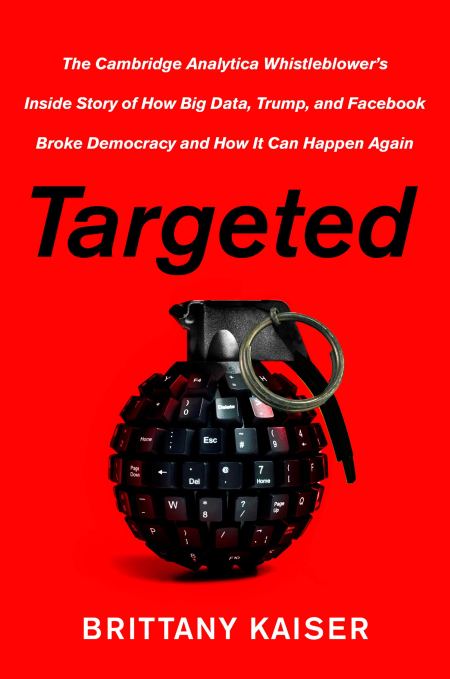
Perhaps no scandal has rocked the tech industry — or politics in general — quite like the Cambridge Analytica imbroglio that not only showed the power that Facebook and other social networks have over us through our user data, but also the scale to which that data influences purchasing decisions and of course, our elections.
Brittany Kaiser was a consultant and former Obama campaign worker who joined Cambridge Analytica hoping to make a difference. I guess in a way she did, eventually learning the true nature of big data and how that intersects with the needs of campaign managers. Through Targeted, she writes about her experience on the ground floor of the organization, and also places the company in the context of the broader challenges facing technology and ethics going forward. Ita cri de coeur for other tech industry workers to think about how their work is affecting society and perhaps tapping out in much the way that Kaiser did.
Targeted is competing directly with Mindf*ck: Cambridge Analytica and the Plot to Break America by Christopher Wylie for this yearbest memoir on the sordid story. Targeted got the recs from EC readers though, and itcertainly a story that deserves more than one point of view.
How to think about the biggest news stories this year
We Are The Weather: Saving the Planet Begins at Breakfast by Jonathan Safran Foer
Farrar, Straus and Giroux / 288 pages / September 2019
PublisherLink
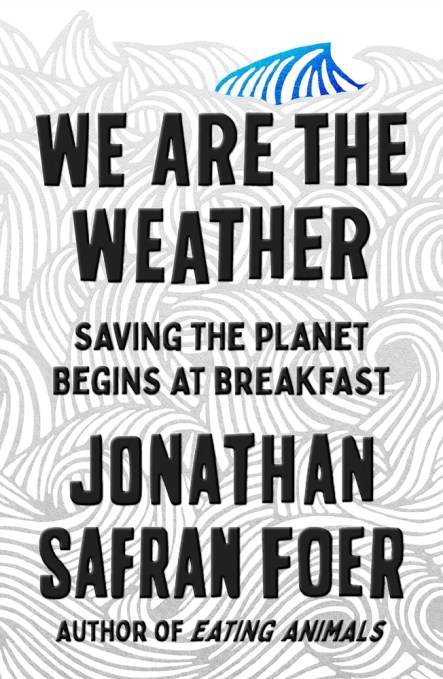
Climate change was all over the news this year, and perhaps nowhere more than in techcentral headquarters of Silicon Valley, which faced fires and repeated blackouts this year as utility company PG-E struggled to deliver power amidst Californiachanging climate. But climate change isn&t just something that is &happening& — itbeing driven by the choices we make every single day.
Long-time novelist Jonathan Safran Foer returns to the theme of his sole non-fiction book Eating Animals to look at how our decisions around food are directly impacting the health of the planet. While it may seem like what we eat for breakfast is but a minor drop of carbon in a massive ocean, the reality is that our collective and aggregated decisions have huge implications for how our food systems are organized.
Foer brings his literary talents to bear on the subject, creating a textured and at times stream-of-consciousness account that interleaves climate change fear, personal anecdotes, and short stories to create a compelling case for changing our daily habits in ways that align with the needs of our environment. It may not be tuned to every readerpreferred style, but few books connect all the dots on this subject quite like We Are The Weather
AI Superpowers: China, Silicon Valley, and the New World Order by Kai-Fu Lee
Houghton Mifflin Harcourt / 272 pages / September 2018
PublisherLink
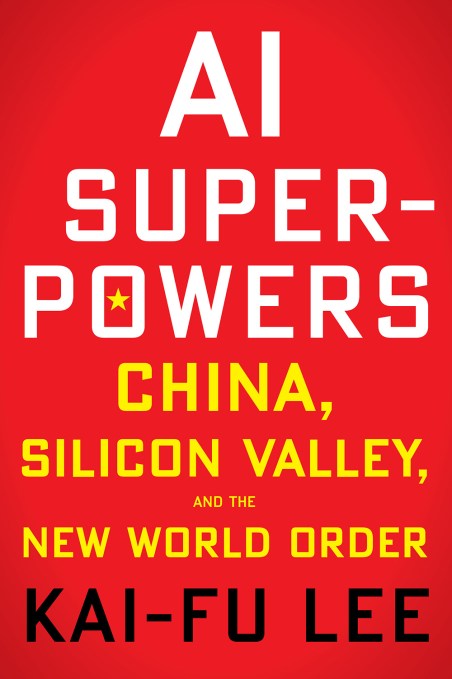
Another storyline that just kept rearing its head in the headlines this year was China. From the trade war and tariffs between Trump and Xi, to the increasing security risks of Chinese industrial espionage, to the surveillance technology that companies like Huawei are exporting to undergird digital authoritarianism, Chinaactions are transforming our world (and at least from this side of the Pacific, not for the positive).
One locus of competition between the U.S. and China though remains focused on artificial intelligence, and which country will take the lead in this critical new market. China has invested prodigious amounts of funding into the industry through its Made in China 2025 plan, while the United States continues to have some of the leading research groups and companies in the space.
Kai-Fu Lee, a well-known trans-Pacific venture capitalist, tries to demystify and de-intensify the arms race story by carefully investigating what is really taking place in the AI labs and products from leading companies like Didi, Baidu, and Google. Less focused on fear than on analysis, Lee brings to bear his decades of experience on the subject to offer readers an in-depth, sober, and ultimately compelling look at how Chinese and American efforts around AI differ, and just how they can learn from each other. It was also our most recommended book by EC members, and I&ve also personally loved it (and discussed it a bit, although never truly got around to reviewing it & sorry!)
How to think about stories
Crafting Stories for Virtual Reality by Lakshmi Sarah and Melissa Bosworth
Routledge / 258 pages / October 2018
PublisherLink
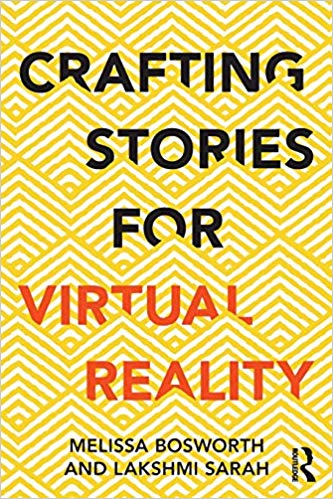
McLuhanoft-repeated and often wrongly-interpreted &the medium is the message& is a key aspect of communications studies, but another angle is that the medium determines the types of stories that can be communicated. Books, radio, and television are platforms that offer storytellers certain tools and constraints, and over the decades (and for books, centuries), we have learned how to mold and optimize our visions to those intrinsic limits.
Virtual reality though is a whole new field, and as a medium, it is just getting started. How do we take advantage of the immersiveness intrinsic to VR? What are the new limits on storytelling, and what norms around plot and characters are going to have to be established to make this medium accessible to viewers?
Multimedia journalists Lakshmi Sarah and Melissa Bosworth wrote Crafting Stories for Virtual Reality as a primer for any storyteller that wants to learn more about how immersive media, augmented reality, and virtual reality are going to transform storytelling, reporting, and entertainment into the future.
As one EC reader wrote in their recommendation:
It provides a really good overview of different types of virtual reality and how they can be shaped to resonate with audiences in different ways. For anyone considering VR, itincredibly helpful.
Itcertainly early days, and books like this almost certainly have a short half-life. Nonetheless, for those looking to explore stories in VR, this is just the title to get up-to-speed on this small but rapidly growing segment of the tech industry.
The Overstory by Richard Powers
W. W. Norton - Company / 512 pages / April 2018
PublisherLink

Our EC readers are heavy on the non-fiction, but we did occasionally get some recommendations for fiction. One popular novel was Richard Powers& The Overstory, which won this yearPulitzer Prize for Fiction. So, okay, clearly a critic favorite. But what makes the novel so unique and compelling in a year that had a serious number of great entries?
Similar to Foer above, Powers is concerned about how humans and climate change are coming together to devastate our natural environment and particularly, our trees and forests. The Overstory is really a multitude of stories of Americans who connect with nature and each other to start to take action to address the massive changes coming and already in progress.
This is the twelfth novel for Powers, who in addition to literature, has a background in physics and was formerly a computer programmer. His work on The Overstory was partly inspired by time he spent in Silicon Valley while at Stanford, where he observed Californiafamed redwood trees. If you are looking for a thought-provoking novel, you don&t need to look too much farther.
How to help yourself in the tech world
The Making of a Manager: What to Do When Everyone Looks to You by Julie Zhuo
Portfolio / 288 pages / March 2019
PublisherLink
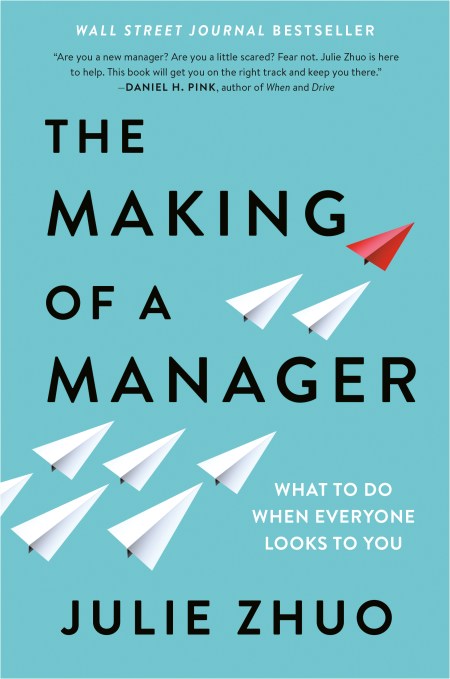
There is an archetypical story that happens at rapidly growing startups. A founder hires friends and people they know, builds a team, launches a product, and strikes gold. As growth continues unabated, more and more people are hired — forcing the startup to invent a management structure to bring some level of organization to the chaos. But managers are hard to find, and there are already employees with some level of tenure at the company. And so those early employees are often moved up rapidly to managerial and executive roles, suddenly handling direct reports with no experience whatsoever.
Julie Zhuo, VP of Design at Facebook, has written a guide for exactly these first-time, suddenly-promoted managers on exactly what they should be doing to begin bringing order to the chaos. This book is definitely in the self-help, management guru wing of the bookstore, but Zhuopersonal experience going through this transformation shows through in her examples and clearly defined points for improvement.
One EC reader wrote in their recommendation:
One of the biggest org fallacies of fast-growing startups is promoting great ICs into first-time management roles and expecting they&ll quickly turn into great people managers with little training, mentorship, or role-models. Since that almost always works to plan, Julie, the first designer and later head of design at Facebook, wrote a book outlining all the challenges of being that first-time manager and the learnings along the way. A book I recommend to my team across the board.
The Making of a Manager targets a unique audience with unique insights and is worth a read.
Permission to Feel: Unlocking the Power of Emotions to Help Our Kids, Ourselves, and Our Society Thrive by Marc Brackett
Celadon Books / 304 pages / September 2019
PublisherLink
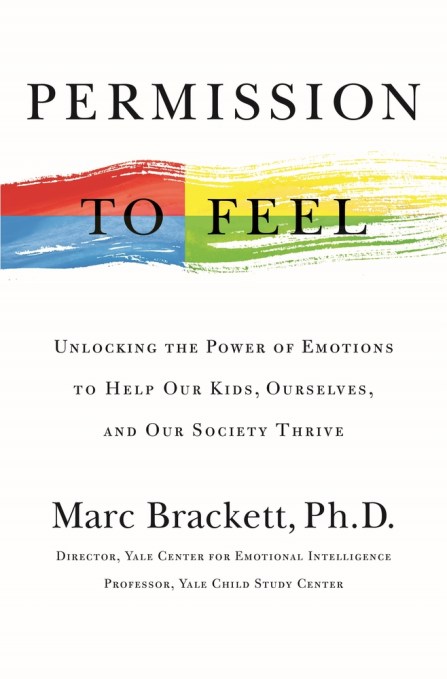
This was a surprising recommendation from the EC membership, but once I investigated it, completely understood why it fits on this list. One of the biggest challenges for children is their emotional development — how do they interact with the world and with other people? How do they listen to themselves and how they are feeling?
Itnot just children though, since all of us can improve how we respond to the daily stresses on our lives.
Thatwhy Marc Brackett, the founding director of the Yale Center for Emotional Intelligence, explores how we handle our emotions and why it is important to give and receive &permission to feel.& He offers an acronym (of course he does) called RULER to manage our emotional lives better:
- Recognizing emotions in oneself and others.
- Understanding the causes and consequences of emotion.
- Labeling emotions with precise words.
- Expressing emotions taking context and culture into consideration.
- Regulating emotions effectively to achieve goals and wellbeing.
Considering that tech can often be one of the least emotionally hospitable industries out there, Brackettthoughts and solutions seem like a perfect fit for improving the quality and well-being of our workplaces and lives.
How to be an entrepreneur
Leonardo Da Vinci by Walter Isaacson
Simon - Schuster / 624 pages / October 2017
PublisherLink
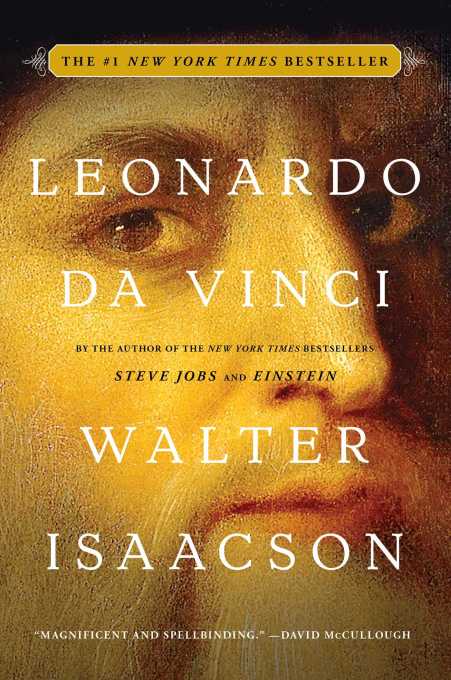
Isaacson is probably best known today for his 2011 biography of Steve Jobs, but he has followed up that magnum opus with another dive into another entrepreneur, this time quintessential Renaissance man Leonardo Da Vinci. You&ve got all the typical Isaacson accoutrements here: the storyline, the characters, the life lessons, the inspiration. I don&t know how anyone can walk away from a book like this and not be deeply inspired by the power of a single human to change the world (or at least invent new ones!)
As one EC member wrote in their recommendation: &Curiosity and imagination lead to awareness and innovation. He perfected the art. A lesson for all.&
The book first came out two years ago with a paperback version coming out about a year ago, so perhaps noteworthy that our EC members still find deep value in this biography and its lessons.
- Details
- Category: Technology
Read more: Gift Guide: 12 must-read books for 2019 as recommended by Extra Crunch readers
Write comment (94 Comments)
What kinds of businesses might be able to operate in space? Well, data centers are one potential target you might not have thought of. Space provides an interesting environment for data center operations, including advanced analytics operations and even artificial intelligence, due in part to the excellent cooling conditions and reasonable access to renewable power supply (solar). But there are challenges, which is why a new partnership between Florida-based space startup OrbitsEdge and Hewlett Packard Enterprises (HPE) makes a lot of sense.
The partnership will make OrbitsEdge a hardware supplier for HPEEdgeline Converged Edge Systems, and basically it means that the space startup will be handling everything required to &harden& the standard HPE micro-data center equipment for use in outer space. Hardening is a standard process for getting stuff ready to use in space, and essentially prepares equipment to withstand the increased radiation, extreme temperatures and other stressors that space adds to the mix.
OrbitsEdge, founded earlier this year, has developed a proprietary piece of hardware called the &SatFrame& which is designed to counter the stress of a space-based operating environment, making it relatively easy to take off-the-shelf Earth equipment like the HPE Edgeline system and get it working in space without requiring a huge amount of additional, custom work.
In terms of what this will potentially provide, the partnership will mean itmore feasible than ever to set up a small-scale data center in orbit to handle at least some of the processing of space-based data right near where itcollected, rather than having to shuttle it back down to Earth. That process can be expensive, and difficult to source in terms of even finding companies and infrastructure to use. As with in-space manufacturing, doing things locally could save a lot of overhead and unlock tons of potential down the line.
- Details
- Category: Technology
Read more: OrbitsEdge partners with HPE on orbital data center computing and analytics
Write comment (98 Comments)AWS announced a new local zone today in LA, designed to provide customers in southern California with a set of higher bandwidth, lower latency compute resources. Itnot a coincidence that this area is the epicenter of the entertainment industry.
Having a local zone gives LA-area companies, whether thatrelated to video processing, gaming, ad tech or machine learning, access to a much more localized set of resources, wrote Jeff Barr of AWS in a blog post announcing the new zone.
&Today we are launching a Local Zone in Los Angeles, California. The Local Zone is a new type of AWS infrastructure deployment that brings select AWS services very close to a particular geographic area. This Local Zone is designed to provide very low latency (single-digit milliseconds) to applications that are accessed from Los Angeles and other locations in Southern California,& Barr wrote
As he pointed out, LA is home to a lot of companies that require this kind of local compute for gaming, 3D modeling and rendering, video processing (including real-time color correction), video streaming and media production pipelines.
The LA zone is actually part of a broader US West (Oregon) Region. Those customers who want to take advantage of the new zone will have to opt in by selecting it in the Local Zones console. It will be billed separately, but also includes access to savings plans.

- Details
- Category: Technology
Read more: AWS launches new local zone in LA
Write comment (98 Comments)Page 196 of 5614

 9
9